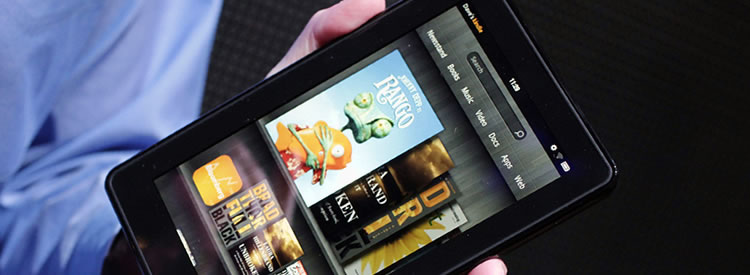Amazon sent a wave crashing through the mobile industry when it announced that its Android based tablet, the Kindle Fire, would land with a price of $199. Its custom UI looked good, Amazon promised tons of available apps and media content, and it seemed poised to steal some thunder from even Apple's vaunted iPad 2, which costs more than twice as much.
And now it's here. Do the expectations mesh with the reality of the device, now that we've been using it? Yes and no. It's still likely the best value in a tablet on the market, and will make tablet computing accessible to many people that either couldn't afford Apple's iPads or couldn't tolerate Android Honeycomb based tablets. While somewhat restricted compared to other Android tablets when it comes to apps and content providers, nobody can argue that Amazon doesn't provide a great self-contained ecosystem. Amazon's streaming services, books and other "print" media offerings, and Appstore - all backed by its cloud storage - give users plenty of opportunities to find stuff to purchase and pass the hours with.
In an obvious attempt to keep manufacturing costs down, the Amazon Kindle Fire sports one of the most basic hardware designs ever seen on a tablet. Not only are the typical Android home, back, and menu buttons missing (replaced by on-screen controls), but you will also find a lack of volume controls and cameras. The only interesting bits on the Fire's exterior are a very poorly placed power button, a micro-USB charging/data port, and the 3.5mm headphone jack - all of which sit in a cluster on the bottom edge of the tablet.
The rear of the device is covered in a soft-touch black paint that hides prints well enough, but offers nothing at all in terms of style. Powering the Kindle Fire is a dual-core 1GHz processor, 512MB of RAM, and 8GB of internal storage. There's only 6.5GB of storage available to the user, and there's no microSD expansion slot, but Amazon's cloud-based storage for apps and media softens that blow since things can be deleted and re-downloaded from the cloud as needed.
The 1024 x 600 pixel resolution, 7-inch touchscreen display works well, and is both bright and adequately sharp, though it is perhaps somewhat lacking in the viewing angle department. The Fire's 190mm x 120mm x 11.4mm (7.5in x 4.7in x .4in) and 413g (14.6oz) weight make it easy to hold for extended periods, too.
Amazon's cost saving design could drive some consumers to consider the Barnes and Noble Nook Tablet instead, as the Nook offers a more interesting look, real hardware controls, and microSD storage expansion for only a little more money.

